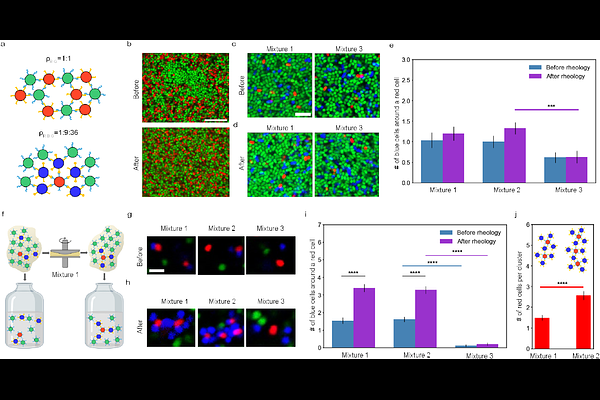Tuning viscoelasticity and fine structure of living materials via synthetic adhesion logic and rheological perturbations

Tuning viscoelasticity and fine structure of living materials via synthetic adhesion logic and rheological perturbations
Costan, S.; Hallerbach, K.; Kim, S.; Camp, C.; Kim, M.; Riedel-Kruse, I. H.
AbstractEngineered living materials (ELMs) at the multicelluar level represent an innovation that promises programmable properties for biomedical, environmental, and consumer applications. However, the rational tuning of the mechanical properties of such ELMs from first principles remains a challenge. Here we use synthetic cell-cell adhesins to systematically characterize how rheological and viscoelastic properties of multicellular materials made from living bacteria can be tuned via adhesin strength, cell size and shape, and adhesion logic. We confirmed that the previous results obtained for non-living materials also apply to bacterial ELMs. Additionally, the incorporation of synthetic adhesins, combined with the adaptability of bacterial cells in modifying various cellular parameters, now enables novel and precise control over material properties. Furthermore, we demonstrate that rheology is a powerful tool for actively shaping the microscopic structure of ELMs, enabling control over cell aggregation and particle rearrangement, a key feature for complex material design. These results deepen our understanding of tuning the viscoelastic properties and fine structure of ELMs for applications like bioprinting and microbial consortia design including natural systems.